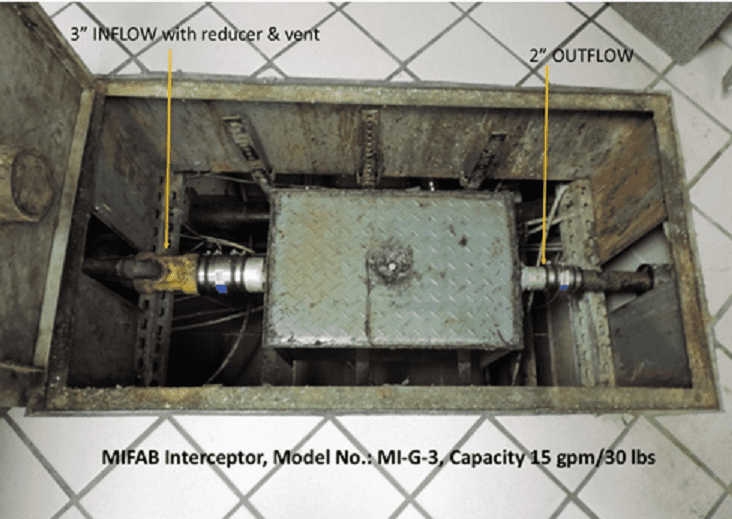The Problem with “Fog”

,
Johann F. Szautner, PE, Civil Engineer ::::
If your work involves commercial kitchens, plumbing, or municipal code enforcement, you may know that fog can have a different meaning from what one may expect. It is the acronym for “Fats, Oils and Grease,” components of wastewater which must be removed before allowing it to enter the municipal collection system, to avoid clogging of pipes. FOG removal is achieved by installing a grease interceptor, commonly referred to as a grease trap. After the kitchen wastewater enters the trap, it cools down immediately, which solidifies the FOGs and floats them on the water surface, while food particles sink to the bottom, leaving a layer of clean water in the middle, which can be safely discharged into the municipal sewer system.
Case synopsis: The plaintiff, a custodial worker, entered the basement beneath an institutional kitchen to retrieve supplies kept there. As he walked around a corridor corner, he slipped and fell on a spill of greasy water, sustaining severe injuries. Defendants included the food service company, which was responsible to maintain the kitchen including the sinks and floor, the company maintaining the trap, and the institution owning the facility, including the kitchen.
Expert Analysis: Many kitchen service liability claims result from defective grease traps, and/or their insufficient maintenance. All too often facility owners are tempted to save costs by purchasing undersized interceptors, not replacing them after their service life expired, and/or contracting maintenance services at inadequate frequencies. During the investigation, it was discovered that inhouse maintenance had replaced a leaking trap with an undersized one, and contracted cleaning and maintenance on a quarterly basis, although the company maintaining the trap recommended monthly maintenance. Another problem with this trap was that it was installed in the space between the kitchen floor and the basement ceiling below, by hanging it with strap hangers from the floor trusses. Any trap spillage would end up on the basement ceiling tiles and migrate along their upper surface and drip on the basement floor at various locations, not directly under the trap location. Further compounding the problem with finding the origin of spillage onto the basement floor was that the access hatch to the trap was not watertight and allowed entry of water from wet mopping of the kitchen floor. Additionally, another custodial staff member mopped the corridor floor shortly before the plaintiff slipped and fell. Therefore, the greasy water spill could have been the result of wet mopping of the basement corridor floor.
Outcome: The plaintiff settled with all defendants.
Johann F. Szautner, PE, is a Civil Engineer with DJS Associates and can be reached via email at experts@forensicDJS.com or via phone at 215-659-2010.
Tags: Civil Engineer | Fog | Johann F. Szautner


